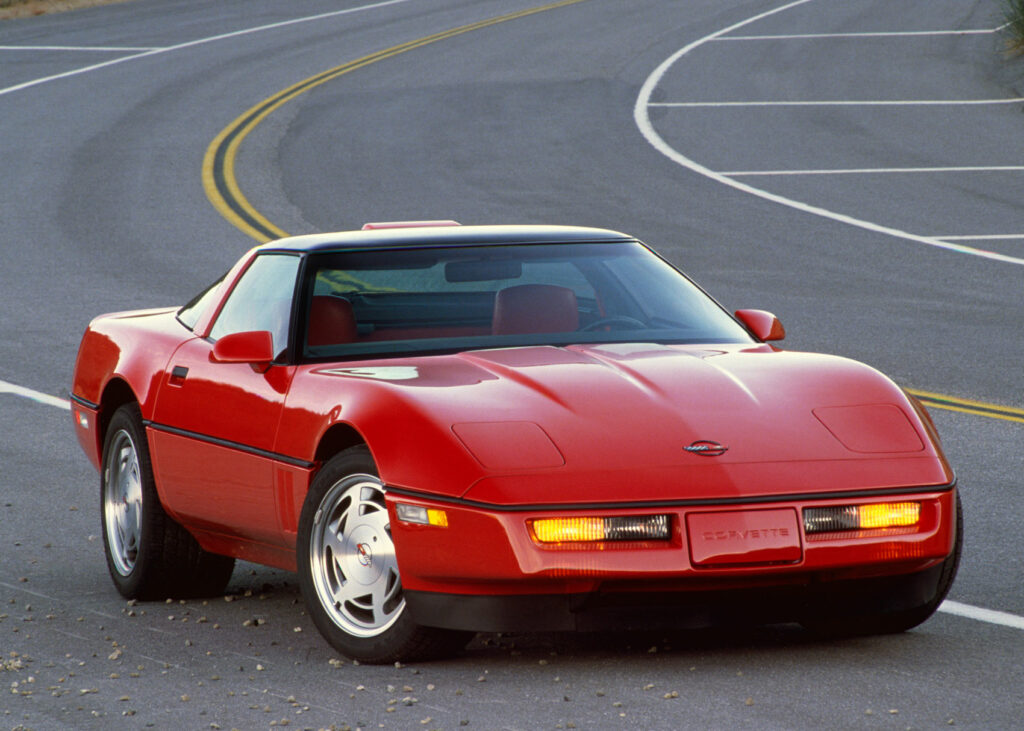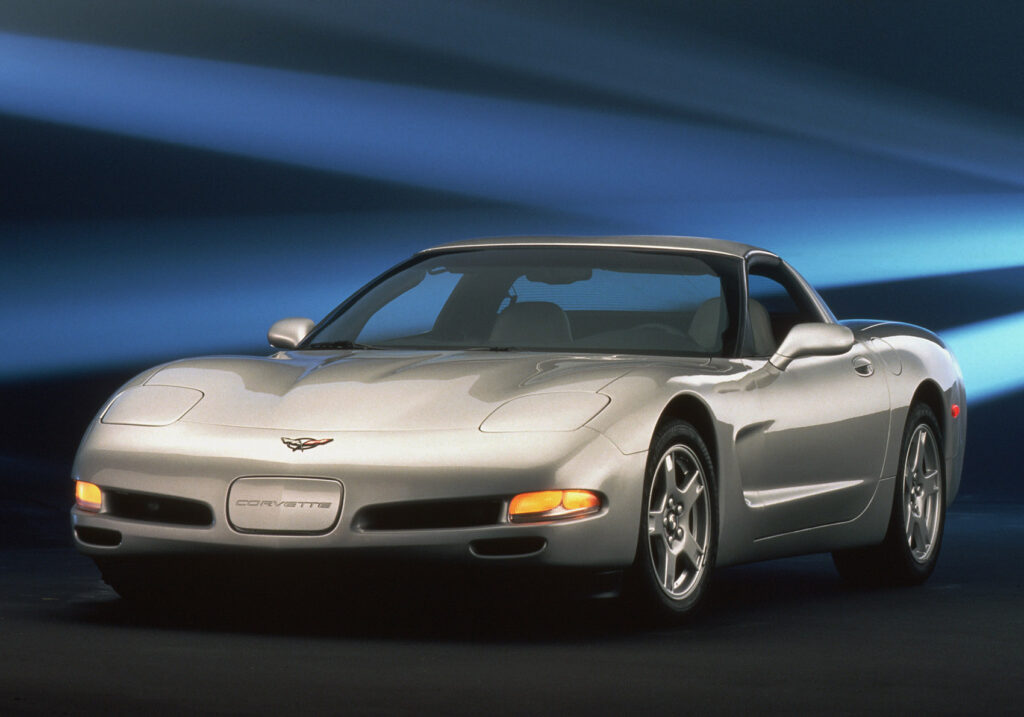The Corvette is one of Chevrolet’s greatest success stories. This American luxury sports car has been around for more than five generations, but like any other model, it’s had a series of hits and misses.
So how can you find out which Corvettes were the best ones ever made? Check out our list of the top Chevrolet Corvettes in history.
1961 Chevrolet Corvette Mako Shark: The Fastest Fish On Dry Land

If there’s one origin story worth hearing, it’s the one about the 1961 Corvette Mako Shark. This Corvette was named after the short-fin Mako Shark that Bill Mitchell caught while he was fishing in the Bahamas.
The Mako Shark is the fastest swimming shark in the world. Mitchell and Larry Shinoda sought to introduce the same concept on dry land.
The 1961 Corvette Mako Shark was a show car that influenced the styling and design of future Corvettes.
The 1961 Corvette Mako Shark isn’t a production car. It’s a non-running concept car that previewed the second-generation Corvette.
Sporting a set of side exhaust pipes that looked like shark gills and a bluish-gray colorway that resembled the notorious ocean predator, the Corvette Mako Shark was a head-turner on auto shows.
The design was such a huge success that it inspired the look of the 1963 Stingray.
The 1961 Corvette Mako Shark featured six tail lights instead of the usual four and a pointed nose to appear more shark-like. It also came with a periscope-like rearview mirror and a clear glass roof.
GM tested several experimental engines on the Mako Shark. These include a supercharged engine with four side-draft carburetors and a V8 engine with two four-barrel carburetors. The present engine is a production 1969 427 cubic inch ZL-1 Chevrolet V8 that’s equipped with a single four-barrel carburetor that can churn upwards of 425 horsepower.
- Engine: 427 cubic inch ZL-1 Chevrolet V8
- Horsepower: 425 hp
- Torque: 480 lb-ft.
1973 Chevrolet Corvette C3 Stingray: Taking the C2 to New Heights

Manufactured from 1967 to 1982, the C3 was a reimagined C2 that took the Corvette name to new heights. With a futuristic fiberglass body, the C3 Stingray looked more like a coupe than the previous harsh exterior.
The C3 Stingray was grand touring-ready, with a wedge on the bonnet and several sporty features that rivaled those from the ZR1 and ZR2. It wasn’t until 1973 when the C3’s makeover took a major turn, transitioning from a muscle car to a sports tourer.
While the C3 Stingray had the same chassis and engine as the C2 at the start, its 1973 model came with a lightweight energy-absorbing urethane bumper. It also replaced the original LT-1 engine with an L-82.
Part of the facelift was a revised cowl hood that reached the windshield, so the model didn’t have the classic vacuum-operated wiper door that the C2 had. The C3 Stingray also reduced interior noise by 40%.
- Engine: Small-block 350 cubic-inch engine
- Horsepower: 210 hp
- Torque: 285 lb-ft.
- 0-60 mph: 6.6s
- Weight: 3,306 lbs.
1988 Chevrolet Corvette Callaway Sledgehammer: More Than Meets the Eye

The 1988 Callaway Sledgehammer’s backstory easily makes the model one of the top Corvettes to ever grace the streets.
Callaway Cars is a specialty vehicle manufacturer that specializes in high-performance engine packages for General Motors. It began modifying Corvettes during the 1980s and gained popularity for developing the Corvette C4’s twin-turbo kit.
The 1988 Callaway Sledgehammer was heavily modified inside out. It sported an extremely aggressive exterior and a NASCAR-spec engine block under the hood.
With NHRA driver John Lingenfelter behind the wheel, the 1988 Callaway Sledgehammer became the fastest road-legal car until 2010, reaching a top speed of 254.7 miles per hour.
- Engine: Twin Turbo 5.7L V8
- Horsepower: 880 hp
- Torque: 772 lb-ft.
- 0-60 mph: 3.9s
- Weight: 3,503 lbs.
1990 Chevrolet Corvette C4 ZR-1: A Superhero C4

With chief engineer Dave McLellan at the helm of the ZR-1 project, the 1990 C4 was worked up to a near-supercar status.
In fact, the ZR-1 was such a high-profile project that Chevrolet sought help from Lotus, which was owned by GM at the time.
Lotus developed the ZR-1’s adaptive Bilstein suspension, which also supported supercars like the Porsche 959 at the time.
The 1990 C4 ZR-1 was also the first Corvette model to have a dual overhead camshaft (DOHC).
- Engine: 5.7L V8 (LT5)
- Horsepower: 380 hp
- Torque: 370 lb-ft.
- 0-60 mph: 4.5s
- Weight: 3,440 lbs.
1997 Chevrolet Corvette C5: Built to Perform

The 1997 Corvette C5 combines next-level performance and comfort. It was perfect for both going on road trips and conquering the tracks.
The C5 wasn’t “Best in Show” during the 1997 NAIAS for nothing. With its highly styled body lines, redesigned dash, and signature fender gills that paid homage to the C1, the C5 turned heads wherever it went.
The C5 also sported a more modern appearance than its predecessor, with its wheels pushed to the corners to enhance overall stability and create a wider interior.
But if there’s one feature in the 1997 C5 that was worth noting, it’s the rear-mounted transaxle. Inspired by the successes of the Ferrari Daytona and Porsche 944, Chevrolet placed the transmission between the rear wheels to offset the mass up front.
Following this setup, the automaker achieved a 51 to 49% weight distribution for the C5. Unlike the C4, the C5 had a higher rear that aimed to reduce drag. It also sported an LS1 engine, which was 45 lbs. lighter than the previous LT4.
- Engine: 5.7 i V8 16V
- Horsepower: 345 hp
- Torque: 350 lb-ft.
- 0-60 mph: 4.5s
- Weight: 3,218 lbs.
2009 Chevrolet Corvette C6 ZR-1: A Carbon Fiber Daredevil

After a 19-year hiatus, the ZR-1 made a comeback to the automotive scene in 2009 with a six-figure price tag, which was a first for factory Corvettes.
The 2009 C6 ZR-1 went all out on carbon fiber body parts, including the roof, engine hood, front splitter, and rocker moldings.
Powered by an LS9 small-block engine, the 2009 C6 redefined the meaning of the American supercar. Like the C5, the C6 ZR-1 made for a great daily driver and racetrack companion.
The 2009 Corvette C6 ZR-1 also sported the largest wheels ever on a production Corvette, which allowed the tires to stick on a skidpad.

- Engine: 6.2L supercharged V-8 (LS9)
- Horsepower: 638 hp
- Torque: 604 lb-ft.
- 0-60 mph: 3.4s
- Weight: 3,324 lbs.
Any information provided on this Website is for informational purposes only and is not intended to replace consultation with a professional mechanic. The accuracy and timeliness of the information may change from the time of publication.















The 1963 split window sees to be missing, and in my mind that is criminal the 1963 split window was so nice and one of the sexy cars to come out of the 60’s. Never mind Ralph Naderhe thought everything was dangerous !